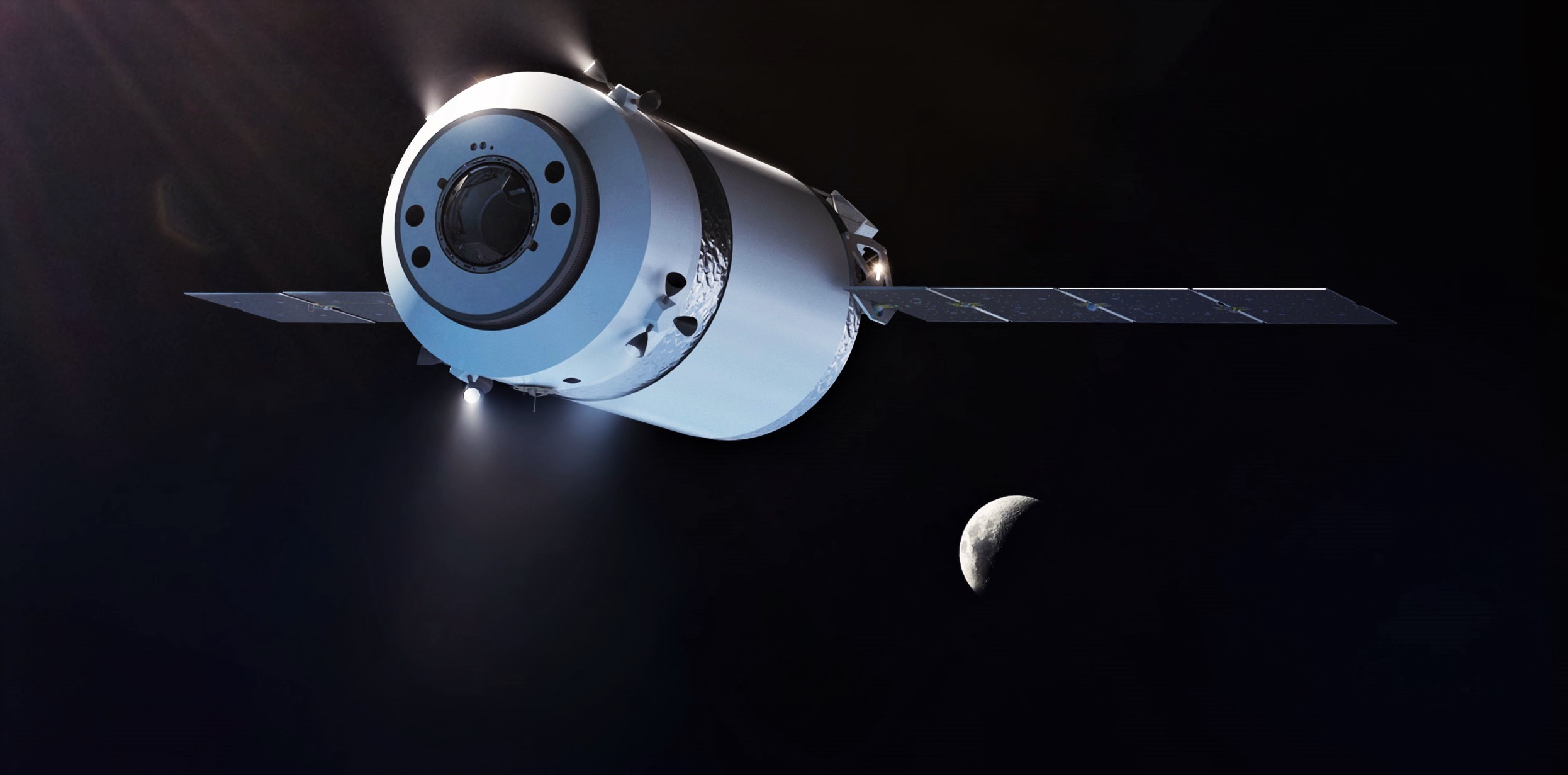
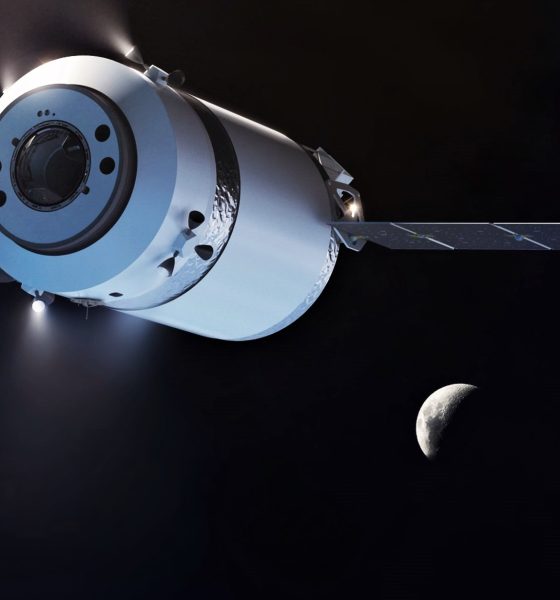
News
SpaceX Dragon XL could supply NASA astronauts around the Moon and Earth
SpaceX’s Moon Dragon could one day deliver supplies to astronauts in Earth orbit on top of its raison d’etre – resupplying NASA’s future lunar space station (Gateway).
Known as Dragon XL, the new SpaceX spacecraft was unexpectedly revealed earlier this year when NASA solely awarded it a Gateway Logistics Services contract potentially worth billions. Dragon XL is almost entirely built out of hardware and systems already built and proven with Cargo Dragon and Crew Dragon over 20 space station launches and two orbital missions, respectively.
Due to NASA’s ever-shifting plans and strategies, however, it’s far from guaranteed that a habitable Gateway will ever actually be built – let alone by the rough 2024 target that’s currently favorable. Given that a huge amount of Dragon XL has already technically been developed, its development should be on the slightly easier side as far as SpaceX programs go. As such, Dragon XL could be ready for flight months or even years before any lunar space station is in place with astronauts to take advantage of it. That possibility raises the question: does NASA plan on SpaceX performing a Dragon XL flight test before its lunar cargo debut?
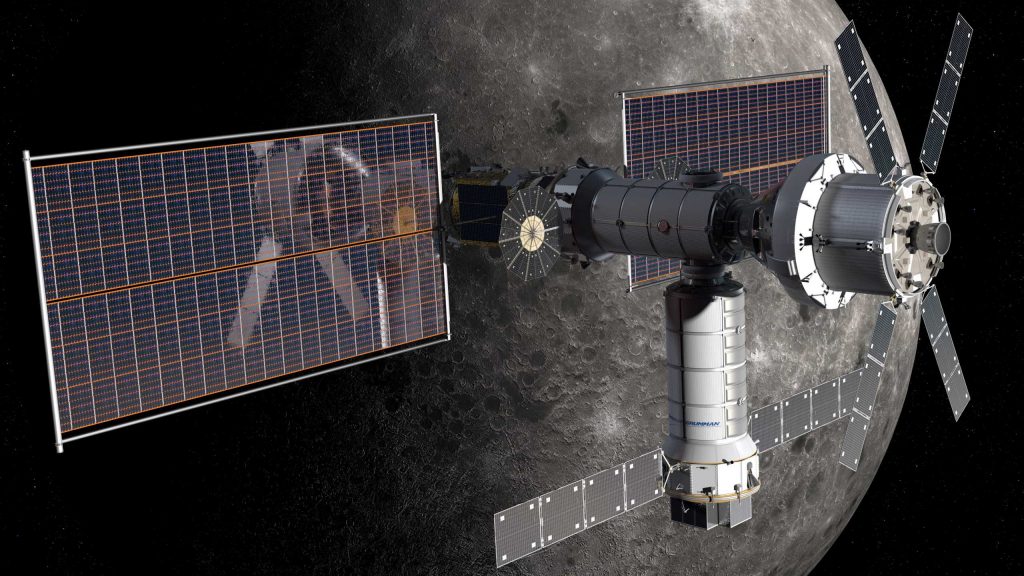
In the unsurprising event that NASA has arranged for a demonstration mission prior to Dragon XL’s first mission-critical lunar resupply launch, a cargo trip to Earth’s International Space Station (ISS) could be a valuable segue. Effectively an expendable, high-volume amalgamation of SpaceX’s Crew Dragon and Cargo Dragon 2 spacecraft, Dragon XL will lose the ability to return payload to the Earth’s surface (downmass) in return for a dramatic increase in payload upmass.
According to NASA, Dragon XL is designed to deliver up to 7.6 tons (~16,800 lb) of cargo – 5 tons pressurized, 2.6 tons unpressurized – to the lunar Gateway and weigh no more than 14 metric tons upon arrival. Compared to Cargo Dragon 1 and 2, XL thus offers a 25-50% improvement. As an expendable spacecraft, Dragon XL is likely going to be much simpler and lighter than SpaceX’s recoverable and reusable Dragon capsules, it’s also reasonable to assume that the new spacecraft could be substantially cheaper, too. Finally, thanks to that 14 ton Gateway mass target, it’s conceivable that a recoverable Falcon 9 booster could launch a fully-loaded Dragon XL to the ISS without issue, making the cost of launch more or less identical to any other Dragon mission.
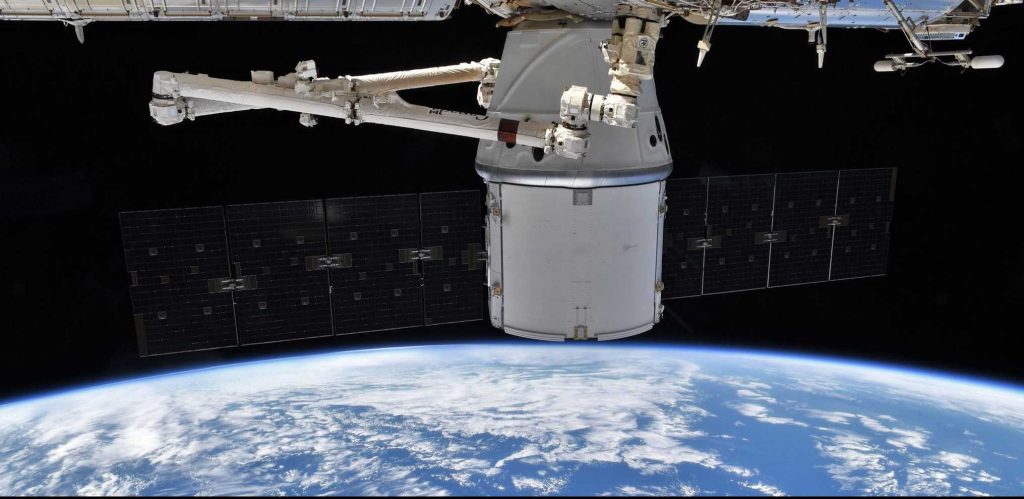

On the other hand, though, Dragon XL’s mission is substantially different – and in some ways more challenging – than the Dragons it’s built off of. Notably, the deep space environment can be substantially more challenging from both a thermal management and radiation perspective, while propulsive maneuvers, operations, and autonomous docking so far from Earth would be a first for SpaceX. A demonstration mission to the International Space Station (ISS) would fail to put Dragon XL through any of those unproven scenarios.
Excluding a demo mission to the ISS, a Falcon 9-launched Dragon XL could potentially serve as an extra-cheap option for NASA to deliver large volumes of supplies, hardware, and experiments to the space station, complimenting Cargo Dragon’s reusability and downmass capabilities. Of course, no current contract exists that would allow SpaceX to fly Dragon XL outside of two resupply missions to the lunar Gateway, but NASA is by no means averse to the idea according to Mark Wiese, manager of Gateway Deep Space Logistics.
Ultimately, the likelihood of Dragon XL being coopted for ISS cargo delivery is low but there is clearly a chance that NASA will exploit its substantial investment in the new SpaceX spacecraft for more than just two Gateway supply runs.
Check out Teslarati’s Marketplace! We offer Tesla accessories, including for the Tesla Cybertruck and Tesla Model 3.

News
Tesla FSD earns high praise in South Korea’s real-world autonomous driving test
As per the Korea Expressway Corporation’s report, the FSD test was conducted on December 15, 2025, from 10 a.m. to 6 p.m.

Tesla’s Full Self-Driving (FSD) has received a bullish assessment from the Korea Expressway Corporation following a real-world autonomous highway driving test.
A report of the test, shared on Naver Cafe, showed high praise for the system’s safety, capabilities, smooth maneuvers, and confidence.
South Korean highway test
As per the Korea Expressway Corporation’s report, the FSD test was conducted on December 15, 2025, from 10 a.m. to 6 p.m. Four people were in the Tesla that was tested, including the head of the mobility department. All four FSD driving modes were tested, from “Sloth” to “Mad Max.”
To test FSD’s performance, the system was tasked to operate on highways such as Gyeongbu, Cheonan, and Cheonan-Nonsan, as well as city areas in Dongtan New Town, Sejong Special City, and Daejeon Metropolitan City, among others.
Since FSD is only available for the Tesla Model S and Model X that are imported to South Korea from the United States, the system was not tested in a Model 3 or Model Y, which comprise the majority of Teslas on the country’s roads today.
Highway test results
Results showed FSD performing well, both in inner-city roads and on highways. In inner city roads, the testers noted that FSD was capable of autonomous driving at a level that already exceeds that of general human drivers, except in very few areas, such as unprotected left turns and work zone intersections.
In highways, the testers described FSD’s performance as “excellent,” though the system still showed frequent cases of violations in local bus lanes and max speed limit rules. These, however, could hopefully be addressed by Tesla in a future FSD update without many issues. The testers also noted that in some parts of the test, FSD seemed to be driving autonomously in accordance with traffic flow rather than strict traffic rules.
테슬라 Fsd 고속도로 자율주행 테스트 결과 보고 by Simon Alvarez
News
Tesla claims nearly 20% market share as Norway sets new car sales record
Tesla captured roughly one in five new cars in Norway, highlighting its dominance in the world’s most EV-friendly market.
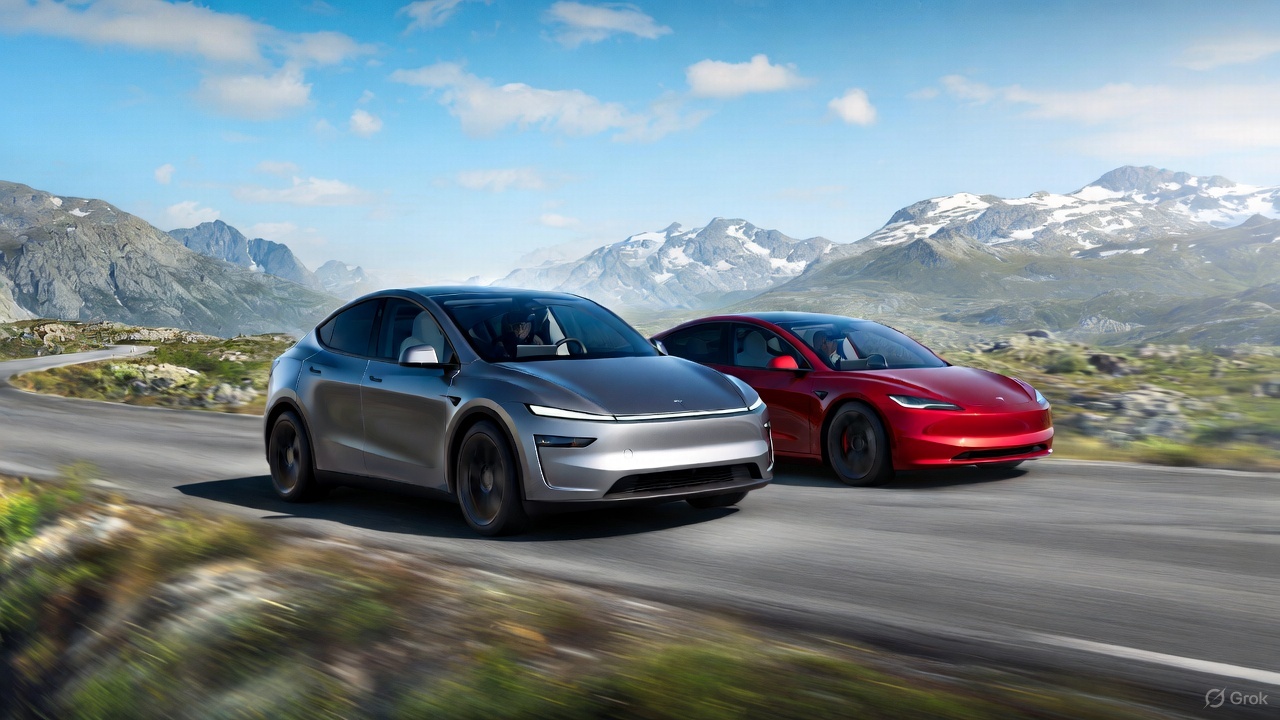
Norway shattered its all-time new car sales record in 2025, and Tesla emerged as the clear winner. A year-end rush ahead of higher EV taxes pushed registrations to nearly 180,000 vehicles, with electric cars accounting for 96% of sales.
Tesla captured roughly one in five new cars in Norway, highlighting its dominance in the world’s most EV-friendly market.
Norway’s EV rush
As noted in a CarUp report, Norway’s electric vehicle sales in 2025 surged, thanks in part to buyers rushing ahead of a post–new year VAT increase of roughly 50,000 kronor on many new electric cars. This ended up pulling demand forward and setting a national record with almost 180,000 registrations in 2025.
The result was unprecedented. From the vehicles that were sold in 2025, 96% of new cars sold were fully electric. And from this number, Tesla and its Model Y made their dominance felt. This was highlighted by Geir Inge Stokke, director of OFV, who noted that Tesla was able to achieve its stellar results despite its small vehicle lineup.
“Taking almost 20% market share during a year with record-high new car sales is remarkable in itself. When a brand also achieves such volumes with so few models, it says a lot about both demand and Tesla’s impact on the Norwegian market,” Stokke stated.
Tesla domination
Tesla led all brands in Norway with 34,285 registrations, which is equal to a 19.1% market share. These results place Tesla well ahead of Volkswagen and Volvo, which held a 13.3% and 7.8% market share in 2025, respectively.
On the model chart, Tesla’s strength was even clearer. The Tesla Model Y topped all vehicles with 27,621 registrations, accounting for 15.4% of the entire market. The Tesla Model 3 also ranked among the top five, accounting for 3.7% of Norway’s entire auto sales in 2025.
Other strong performers included Volkswagen’s ID.4 and ID.7, Toyota’s bZ4X, which commanded 4.9%, 3.9%, and 4.1% of Norway’s total sales in 2025, respectively.
News
Tesla China sees 2nd-best month ever by selling 97,171 vehicles wholesale in December
The results mark Tesla China’s second-highest monthly result on record, trailing only November 2022’s 100,291 units.

Tesla posted a sharp year-end rebound in China last month, with December’s wholesale figures climbing to their second-highest level to date.
The surge capped a late-year recovery for the electric vehicle maker, even as full-year wholesale figures still finished lower year over year. Still, the data highlights how Tesla China’s offerings still resonate with customers in the world’s most competitive electric vehicle market.
Tesla China’s December surge
Tesla China sold 97,171 vehicles wholesale in December, as per data from the China Passenger Car Association (CPCA). The results mark Tesla China’s second-highest monthly result on record, trailing only November 2022’s 100,291 units, based on data compiled by CNEVPost. The details of Tesla China’s December results, such as its domestic sales and exports, are yet to be released.
December’s wholesale results represent a 3.63% increase from the same month last year and a 12.08% jump from November’s 86,700 units. It also marked the second consecutive month of year-over-year growth, signaling renewed momentum in China.
Tesla’s late-year momentum is believed to be partly driven by Tesla pulling deliveries forward to allow buyers to take advantage of more favorable purchase tax policies before the calendar year ended. That strategy helped boost monthly performance even as competition in China’s EV market remained intense.
Tesla China’s FY 2025 volumes
Despite the strong December finish, Tesla China’s wholesale sales declined on an annual basis. The electric vehicle maker’s total wholesale figures for 2025 reached 851,732 units, down 7.08% year over year. This could have been due to a variety of factors, from intense competition in the domestic Chinese market to Giga Shanghai’s changeover to the new Model Y in the early part of the year.
Tesla Gigafactory Shanghai continues to play a central role in its global operations, producing the Model 3 sedan and Model Y crossover for both Chinese customers and export markets. The efficiency of Gigafactory Shanghai has allowed it to become Tesla’s largest factory by volume, as well as the company’s primary vehicle export hub.







